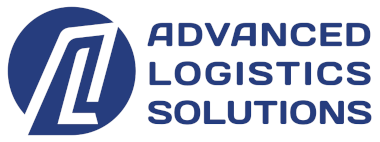
Executive Summary
The global logistics industry confronts significant challenges as economic indicators signal substantial deceleration in trade volumes and fundamental market restructuring driven by trade policy developments. This analysis examines the impacts of economic slowdown on logistics operations, providing strategic frameworks for maintaining operational resilience, optimizing cost structures, and positioning for recovery. Understanding these dynamics enables informed decision-making supporting business continuity during challenging economic periods.
Strategic Response Framework for Logistics Operations During Economic Deceleration
(经济放缓期间物流运营的战略应对框架)
1 · Economic Indicators Signal Broad-Based Slowdown
The convergence of multiple economic indicators across major markets signals fundamental shifts in global trade patterns requiring strategic response beyond typical cyclical adjustments.
Manufacturing and Service Sector Weakness
The Institute for Supply Management (ISM) Non-Manufacturing Index declined to precisely 50.0 in September 2025, marking the expansion-contraction threshold and representing the weakest performance since May 2020. The Business Activity Index fell to 49.9, indicating actual contraction in service sector activity affecting logistics demand. Key component metrics reveal concerning trends:
- New Orders: 49.4 (declining demand for logistics services)
- Employment: 48.2 (workforce reductions across service sectors)
- Supplier Deliveries: 51.6 (loosening capacity rather than congestion)
The Logistics Managers’ Index (LMI) fell to 57.4 in September 2025, its lowest level in six months, down from 59.3 in August, signaling moderation in logistics sector expansion driven by slower growth across most components. The index reveals concerning detailed dynamics affecting the industry:
Transportation Sector Contraction:
- Transportation Utilization: Dropped sharply to 50.0 (down 4.7 points), indicating complete stagnation and representing the weakest September reading on record despite typically busy freight season
- Freight Inversion: Slight negative freight inversion persisting since August, with transportation prices (54.2) slipping below transportation capacity (55.1), indicating oversupply conditions
- Market Implication: Carriers face pricing pressure as capacity exceeds demand, creating rate competition
Inventory and Warehousing Dynamics:
- Inventory Levels: Expansion slowed to 55.2 (down 3.1 points) as companies manage stock more conservatively
- Inventory Costs: Remained elevated at 75.5 despite 3.7 point decline, reflecting persistent carrying cost pressures
- Warehousing Utilization: Increased to 65.3 (up 3.2 points), suggesting inventory concentration
- Warehousing Prices: Recorded steepest decline at 66.0 (down 6.3 points), indicating competitive pressure in storage markets
The American Trucking Associations’ Truck Tonnage Index reported consecutive monthly declines through Q3 2025, with year-over-year volumes down 4.2 percent in September, confirming broad-based freight demand weakness. U.S. Bureau of Labor Statistics data for the transportation and warehousing sector shows employment declining 1.8 percent year-over-year in Q3 2025, with the warehousing and storage subsector experiencing particularly sharp 3.4 percent workforce reductions. These employment trends signal sustained demand weakness rather than temporary fluctuation, driven by trade policy uncertainty, manufacturing sector contraction, and inventory destocking following 2021-2023 supply chain disruption-driven overbuilding.
Trade Volume Projections and GDP Implications
The OECD’s upgraded 2025 global growth forecast to 3.2 percent largely reflects front-loading of exports ahead of tariff implementation rather than fundamental strengthening. The organization specifically warns that tariff impacts have not yet materialized, projecting growth deceleration to 2.6 percent in 2026 as Trump administration policies take full effect. This trajectory suggests current volumes may represent artificial peaks followed by significant decline.
Critical Trade Volume Indicators:
- National Retail Federation: 5.6% decline in U.S. container port imports through end of 2025 (approximately 1.2 million TEUs)
- U.S. Census Bureau: 8.3% year-over-year decrease in goods imports for Q3 2025
- Port of Los Angeles: 12.4% volume decline in September 2025 compared to prior year
- Association of American Railroads: Intermodal volumes down 6.8% year-over-year through September
- Expected GDP impacts from current tariff policies: -1.1% global economy, -1.8% U.S. economy
2 · Container and Air Freight Market Dynamics
Ocean Freight Overcapacity and Rate Collapse
The Drewry World Container Index declined for eleven consecutive weeks to $2,119 per FEU as of late August 2025, representing approximately 65 percent decline from 2021-2022 peak levels. This sustained decline reflects fundamental capacity-demand imbalance as new vessel deliveries ordered during tight markets enter service while cargo demand softens.
Rate Decline by Trade Lane:
- Trans-Pacific Eastbound: $8,000 peak to $2,400 current (70% decline)
- Trans-Atlantic: $6,000 peak to $1,800 current (70% decline)
- Contract rates: 15-25% premium over spot rates for capacity guarantees
Carrier Operational Responses:
- Slow steaming to reduce effective capacity and fuel consumption
- Blank sailings canceling scheduled services
- Alliance cooperation for vessel sharing and network optimization
These capacity management efforts partially mitigate rate pressure but create service implications including reduced schedule frequency, longer transit times, and increased transshipment requirements.
Air Cargo Deceleration
Global air cargo demand growth slowed to approximately one percent year-over-year in June 2025 compared to five percent average during Q1. This deceleration reflects reduced supply chain urgency, improved ocean freight reliability enabling modal shifts, and weakening demand for high-value electronics. Air cargo rates from Asia to North America declined 25-30 percent from peak levels to current $4.50-5.50 per kilogram.
Capacity Growth Pressures:
- Belly capacity restoration as passenger aviation recovers
- Dedicated freighter additions (Boeing 777F, Airbus A350 conversions)
- New aircraft deliveries reflecting pre-slowdown orders
Improving ocean freight reliability creates intensified air-sea competition, particularly for electronics and fashion cargo tolerating 15-25 day ocean transit versus 3-5 day air movement.
3 · Tariff Policy Disruptions and Supply Chain Restructuring
Front-Loading Volatility and Demand Destruction
Anticipation of tariff implementation drove substantial front-loading during Q1-Q2 2025, with container imports increasing 15-20 percent above normal patterns despite soft retail sales. This temporary surge reversed sharply post-implementation, with volumes declining steadily since July according to Descartes Systems analysis. The decline reflects:
- Demand destruction from higher landed costs
- Inventory overhangs requiring extended sell-through periods
- Strategic sourcing shifts accelerating diversification
The volatility creates planning challenges as capacity positioned for elevated volumes becomes excessive during subsequent softness, forcing carriers into difficult decisions about service maintenance, blank sailings, or aggressive rate cutting.
Regional Sourcing Shifts
Section 301 duties on Chinese imports (7.5-25% additional duties creating combined 20-40% tariff burdens) drive accelerated diversification efforts. Companies expanding sourcing from Vietnam, Thailand, India, and Mexico face multi-year transition periods:
Key Alternative Markets:
- Mexico: USMCA duty-free access, geographic proximity, substantial manufacturing investment growth including automotive and electronics sectors
- Central America: CAFTA-DR preferential access, apparel and light manufacturing expansion
- Canada: USMCA integration, automotive and manufacturing sector growth
- Southeast Asia: Vietnam, Thailand, Malaysia showing significant U.S. export growth
U.S. import data reveals accelerating diversification trends, with Mexico’s share of total U.S. imports rising to 15.4 percent in Q3 2025 from 13.9 percent in 2023, while China’s share declined to 13.2 percent from 16.5 percent over the same period. This fundamental reshaping of North American trade patterns creates both challenges and opportunities for logistics providers serving evolving supply chain networks.
Logistics Network Implications:
- Traditional China-U.S. West Coast lanes declining
- Southeast Asian, Indian, Mexican route growth
- Mexico favors Southwest gateways and cross-border truck movements
- Multi-country sourcing increases complexity requiring additional inventory buffers
4 · Operational Efficiency Strategies
Transportation Network Optimization
Network rationalization proves essential during margin pressure, with hub-and-spoke structures concentrating volumes enabling:
- Higher equipment utilization and better load factors
- Improved driver productivity through longer average haul lengths
- Economies of scale on primary routes
- 8-15% cost reductions through route optimization technology (AI/ML-powered systems)
Route optimization technology enables dynamic routing decisions responding to real-time traffic, weather, and consolidation opportunities, though implementation requires software investment and change management.
Warehouse Productivity Enhancement
Warehouse labor typically comprises 50-60 percent of facility operating costs, making productivity improvements critical. Strategies include:
Technology-Enabled Improvements:
- Warehouse management systems optimizing inventory placement and pick routing
- Voice-directed picking systems increasing accuracy and reducing training
- Automated guided vehicles for material movements
- Robotic picking systems for repetitive tasks
Process Improvement Methodologies:
- Lean and Six Sigma principles identifying waste elimination
- Receiving process streamlining, put-away optimization
- Pick path optimization, packing station efficiency
- 15-25% productivity improvements typical over 12-18 months
Asset Utilization Management
Higher asset utilization spreads fixed costs across larger volume bases. During demand softness, capacity management decisions balance efficiency objectives against flexibility for recovery:
Strategic Approaches:
- Equipment leasing versus purchasing for flexibility
- Third-party logistics partnerships for variable capacity
- Temporary labor for workforce flexibility
- Conservative capacity retention versus aggressive reduction
5 · Technology Investment Priorities
Transportation Management Systems
Cloud-based TMS platforms offering optimization, carrier management, freight payment automation, and analytics deliver 6-12% transportation cost savings with 12-18 month payback periods for companies spending $10 million+ annually. Key capabilities include:
- Rate optimization through improved carrier selection
- Automated processes replacing manual planning
- Enhanced visibility and proactive exception management
- Predictive analytics identifying potential delays
Supply chain visibility platforms extending beyond transportation provide end-to-end tracking, enabling inventory optimization, working capital reduction, and improved customer service through delivery predictability.
Warehouse Automation Spectrum
Basic Automation (3-5 year payback):
- Powered conveyors, automated sortation
- Vertical lift modules
- 15-30% productivity gains
Advanced Automation (longer payback, higher returns):
- Automated storage/retrieval systems (AS/RS)
- Goods-to-person robotic systems
- Autonomous mobile robots
- 40-60% productivity improvements
Software Automation (RPA):
- $25,000-100,000 initial investment
- 2-4 month implementation
- Applications: order processing, invoice matching, data entry
Data Analytics and AI Applications
Machine learning-based demand forecasting improves accuracy 20-40% compared to traditional methods, enabling inventory reductions of 10-20% while maintaining service levels. Additional applications include:
- Network optimization evaluating alternative distribution configurations
- Predictive maintenance reducing downtime and extending equipment life
- Transportation analytics identifying routing optimization and carrier performance patterns
6 · Customer Relationship and Service Strategies
Strategic Account Management
Customer segmentation analysis identifies high-value relationships warranting differentiated service. Typical framework:
Segmentation Tiers:
- Strategic Accounts (20-30% of customers, 60-80% of profits): Dedicated account management, customized services, regular business reviews
- Growth Accounts: Moderate investment with clear paths to strategic status
- Transactional Customers: Standardized services, efficient delivery, competitive pricing
Account planning processes for strategic customers establish mutual understanding of objectives, service requirements, and improvement opportunities, with quarterly business reviews ensuring performance alignment.
Value-Added Service Development
Services extending beyond basic transportation and warehousing create differentiation while strengthening relationships through increased switching costs:
Physical Value-Added Services:
- Kitting and light assembly
- Product customization and labeling
- Returns processing and quality inspection
- Specialized handling for regulated products
Technology-Enabled Services:
- Real-time shipment visibility (table-stakes requirement)
- Advanced analytics and reporting
- Automated documentation processing
- Supply chain optimization consulting
Consulting services helping customers optimize networks, reduce costs, and navigate regulations position logistics providers as strategic partners, generating relationship depth beyond pure service execution.
7 · Financial Management and Risk Mitigation
Cash Flow and Working Capital Optimization
Cash management becomes critical during economic weakness. Effective approaches include:
Cash Flow Management:
- 12-18 month forward forecasting with monthly granularity
- Multiple scenario planning for various demand outcomes
- Contingent financing arrangements ensuring liquidity
Working Capital Optimization:
- Receivables: Credit policy tightening, collection automation, early payment discounts, factoring when needed
- Inventory: Better demand forecasting, improved supplier lead times, strategic positioning
- Payables: Supplier segmentation by criticality, dynamic discounting programs
Capital Expenditure Discipline:
- Critical maintenance, regulatory compliance, customer retention: continue
- Capacity expansion, speculative technology: defer
- Balanced approach avoiding complete freezes that undermine competitiveness
Credit Risk Management
Customer credit risk increases during downturns. Proactive management includes:
Early Warning Indicators:
- Payment pattern deterioration
- Credit limit increase requests
- Financial statement weakening
- Management turnover or negative industry news
Risk Mitigation Strategies:
- Enhanced monitoring for distressed customers
- Credit limit reductions or collateral requirements
- Diversification limiting individual customer exposure to 5-10% of revenue
- Credit insurance for concentrated exposures or international customers
8 · Workforce and Organizational Resilience
Strategic Workforce Planning
Balancing cost pressures against talent retention requires sophisticated analysis:
Core Capabilities Protection:
- Identify critical functions essential for competitive positioning
- Protect customer-facing operational roles even when utilization declines
- Evaluate administrative and overhead functions for reduction opportunities
Retention Strategies:
- Transparent communication reducing uncertainty
- Career development demonstrating investment in employees
- Recognition programs acknowledging contributions
- Selective compensation adjustments for critical roles
Workforce Flexibility:
- Temporary labor and contract workers for demand volatility
- Cross-training enabling internal flexibility across functions
- Balanced approach maintaining core permanent workforce
Performance Management and Productivity
Effective systems establish clear expectations, provide regular feedback, and link rewards to results:
Key Components:
- Specific, measurable objectives aligned with organizational goals
- Balance of lagging (outcomes) and leading (drivers) indicators
- Weekly/monthly performance discussions enabling course correction
- Incentive compensation linking variable pay to performance
Training Investment:
- Cost-effective approaches: internal experts, online platforms, peer mentoring
- Technical skill development ensuring consistent execution
- Leadership development building supervisory capabilities
- Cross-functional rotational programs developing future leaders
9 · Strategic Planning and Recovery Positioning
Scenario Planning and Flexibility
Developing multiple future outlooks enables agile response to evolving conditions:
Scenario Development:
- Identify key uncertainty drivers (demand trajectory, competition, regulations, macroeconomics)
- Develop 3-5 plausible scenarios spanning reasonable outcome ranges
- Create response plans for each scenario with clear trigger points
- Establish thresholds signaling which scenario unfolds
Flexibility Strategies:
- Variable cost structures through outsourcing and contract labor
- Short-term capacity commitments via equipment leasing
- Modular technology platforms enabling rapid changes
- Conservative leverage and available credit facilities
Market Recovery Preparation
Positioning for recovery during downturns enables disproportionate growth capture:
Operational Readiness:
- Strategic capacity retention in growth potential areas
- Capability development for underserved markets
- Technology platform enhancement creating differentiation
Customer Relationship Investment:
- Superior service reliability during challenging periods
- Responsive communication and collaborative problem-solving
- Trust building forming foundations for long-term partnerships
Strategic Positioning:
- Geographic expansion into underserved markets
- Service capability development in growing segments
- Technology investments creating lasting competitive advantages
Industry Consolidation Opportunities
Economic weakness drives consolidation as competitors face financial distress:
Acquisition Considerations:
- Market share expansion at attractive valuations
- Geographic footprint enhancement
- Capability additions generating synergies
- Enhanced due diligence for distressed scenarios
Defensive Positioning:
- Customer relationship strengthening against competitive attacks
- Operational excellence creating cost and service advantages
- Pricing discipline avoiding unsustainable rate cutting
- Strategic account focus balancing pricing across portfolio
10 · Sustainability During Economic Pressure
Environmental priorities continue advancing despite financial constraints, driven by regulations, customer expectations, and corporate commitments.
Emissions Reduction Strategies
Fleet and Operations:
- Fleet modernization achieving 20-30% better fuel economy
- Alternative fuels (electric vehicles for urban delivery, renewable natural gas)
- Route optimization and load factor improvement
- Driver training for fuel-efficient behaviors
Facility Sustainability:
- Energy efficiency investments: LED lighting, HVAC upgrades, automated controls
- Solar installations via power purchase agreements (no upfront capital)
- Waste reduction and recycling programs
- Closed-loop pallet programs
Measurement and Reporting:
- GLEC framework or Smart Freight Centre methodologies
- Shipment-level emissions calculation and customer reporting
- CDP, SBTi, TCFD framework compliance
- Integration into carrier selection and procurement decisions
11 · Conclusion and Strategic Recommendations
Integrated Success Framework
Effective response requires integrated approaches addressing interconnected challenges across multiple dimensions:
Essential Success Characteristics:
- Strategic Clarity: Focus on core competitive advantages and market positioning priorities
- Operational Excellence: Reliability, efficiency, and quality creating both cost competitiveness and service differentiation
- Customer Focus: Relationship strengthening and value demonstration reducing vulnerability to competitive attacks
- Financial Discipline: Cash flow management and risk mitigation without excessive cost cutting undermining service
- Workforce Investment: Talent retention and capability building positioning for recovery
Balanced Leadership Approach:
- Realistic optimism balancing challenge acknowledgment with strategic confidence
- Decisive execution with adequate analysis and stakeholder engagement
- Transparent communication creating understanding while maintaining motivation
- Resilience building through psychological safety and adaptability
Recovery Positioning
While current indicators suggest continued softness into 2026, eventual recovery proves inevitable. Organizations preparing during downturns capture disproportionate growth through:
- Customer relationship development and loyalty building
- Capability building in operational excellence and technology
- Capacity maintenance in growth areas
- Financial positioning enabling investment when opportunities emerge
Historical Perspective: The logistics industry demonstrated resilience through the 2008-2009 financial crisis, early 2000s recession, and 1990s downturn. Each cycle created consolidation opportunities, drove operational innovations, and rewarded strategic focus and financial discipline. Current challenges prove significant but manageable for well-managed organizations employing comprehensive strategic frameworks.
Key Takeaways
Immediate Priorities:
- Enhance operational efficiency through network optimization and productivity improvements
- Strengthen customer relationships through superior service and transparent communication
- Manage cash flow and working capital aggressively
- Protect critical workforce capabilities while optimizing cost structures
- Maintain selective technology investments creating competitive advantages
Long-Term Positioning:
- Develop scenario plans with clear triggers and response strategies
- Prepare operational capacity and capabilities for recovery
- Position strategically for consolidation opportunities or defensive strength
- Invest in sustainability initiatives supporting long-term requirements
- Build organizational resilience through culture and leadership development
By understanding economic signals, implementing appropriate operational responses, maintaining strategic investments, and positioning for recovery, logistics companies can successfully navigate current challenges while building capabilities supporting sustained success through economic cycles.
This analysis provides logistics professionals with strategic frameworks for navigating economic slowdown challenges while maintaining competitive positioning. Advanced Logistics Solutions specializes in helping organizations optimize operations, manage costs, strengthen customer relationships, and develop strategies supporting sustained performance. Our team of logistics industry experts provides customized consulting, implementation support, and ongoing guidance tailored to specific organizational requirements. Contact us for assistance with operational improvement, strategic planning, or market positioning during challenging economic environments.


